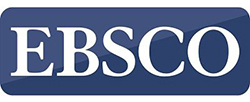Higher art education in the European Union: Innovative technologies
DOI:
https://doi.org/10.46502/issn.1856-7576/2023.17.02.20Palabras clave:
artistic higher education, European Union, digital technologies, pedagogical innovations, digital competence.Resumen
The modern development of information technologies has significantly influenced the transformations in the system of learning and teaching in European institutions of higher education of art. The purpose of the article is to analyze the use of innovative technologies in teaching methods in modern higher art education in the countries of the European Union. General scientific methods of analysis and synthesis were used to write the article. The results identified the main philosophical principles on which modern principles of educational work are based, in particular the democratization of the educational process, taking into account modern requirements in teaching and creative work. It has been established that classical models of teaching activity are in crisis due to the use of digital technologies and digital education. In higher educational institutions of France, Germany, Austria, and Latvia, art departments and universities use E-learning and engage temporary lecturers and artists to conduct classes. Content analysis of syllabi and educational programs of art institutions and faculties of higher education in the countries of the European Union was also carried out. The conclusions emphasize the fact that in the educational environment of European countries, the formation of digital and informational competence of students is emphasized.
Citas
Andersone, R. (2020). Innovations in the improved curriculum content of the competence Approach: a case study in Latvia. Rural Environment. Education. Personality (REEP), 13, 213-218. https://doi.org/10.22616/reep.2020.025
Baldacchino, J., & Vella, R. (2013). Mediterranean art and education: Navigating local, regional and global Imaginaries through the lens of the arts and learning. Springer Science & Business Media.
Ferro, L., Wagner, E., Veloso, L., IJdens, T., & Lopes, J. T. (2019). Arts and cultural education in a world of diversity. Springer.
Hickman, R., Freedman, K., Meager, N., Baldacchino, J., & Hall, E. (2019). International encyclopedia of art and design education. Wiley & Sons, Incorporated, John.
Holochwost, S. J., Goldstein, T. R., & Wolf, D. P. (2021). Delineating the benefits of arts education for children’s socioemotional development. Frontiers in Psychology, 12. doi: https://doi.org/10.3389/fpsyg.2021.624712
Kárpáti, A. (2019). Art education in Central and Eastern Europe. The International Encyclopedia of Art and Design Education, 1-17. doi: https://doi.org/10.1002/9781118978061.ead107
Khojasteh, F., Assareh, А., Hajiani, A., & Araghieh, A. (2020). A Comparative Study of National Identity Dimensions in Educational System of Canada, France, Japan and Iran. Iranian Journal of Comparative Education, 3(4), 922-943. doi: https://doi.org/10.22034/IJCE.2020.212574.1081
Kurbanbaev, K. A., & Omorkulov, A. O. (2018). Interrelation of art and philosophy: Philosophical analysis. Theoretical & Applied Science, 58(02), 20–23. doi: https://doi.org/10.15863/tas.2018.02.58.6
Prokopenko, O. (2021). Technological challenges of our time in the digitalization of the education of the future. Futurity Education, 1(2), 4–13. https://doi.org/10.57125/FED/2022.10.11.14
Popyuk, I. (2020). Integration of art education in Ukraine and Europe in the late XXth to early XXІst century (by way of example of artistic metal working). In Innovative scientific researches: European development trends and regional aspect. Publishing House “Baltija Publishing”. doi: https://doi.org/10.30525/978-9934-588-38-9-49
Rani, G., Kaur, P., & Sharma, T. (2022). Digital education challenges and opportunities. Journal of Engineering Education Transformations, 35(4), 121–128. doi: https://doi.org/10.16920/jeet/2022/v35i4/22111
Safonov, Y., Usyk, V., & Bazhenkov, I. (2022). Digital transformations of education policy. Baltic Journal of Economic Studies, 8(2), 127–136. doi: https://doi.org/10.30525/2256-0742/2022-8-2-127-136
Serdyukov, P. (2017). Innovation in education: What works, what doesn’t, and what to do about it? Journal of Research in Innovative Teaching & Learning, 10(1), 4-33. doi: https://doi.org/10.1108/jrit-10-2016-0007
Sprague, T. (2016). Education in Non-EU countries in Western and Southern Europe. Bloomsbury Publishing.
Schneider, V., & Rohmann, A. (2021). Arts in education: A systematic review of competency outcomes in quasi-experimental and experimental studies. Frontiers in Psychology, 12. doi: https://doi.org/10.3389/fpsyg.2021.623935
Sickler-Voigt, D. C. (2019). The Choice-Based Art Curriculum. In Teaching and learning in art education (с. 23–40). Routledge. doi: https://doi.org/10.4324/9781351000963-2
Descargas
Publicado
Cómo citar
Número
Sección
Licencia
Derechos de autor 2023 Nadiia Lavrentieva , Olena Spolska, Oksana Korol, Andrii Markovskyi, Victoria Tkachenko

Esta obra está bajo una licencia internacional Creative Commons Atribución 4.0.















